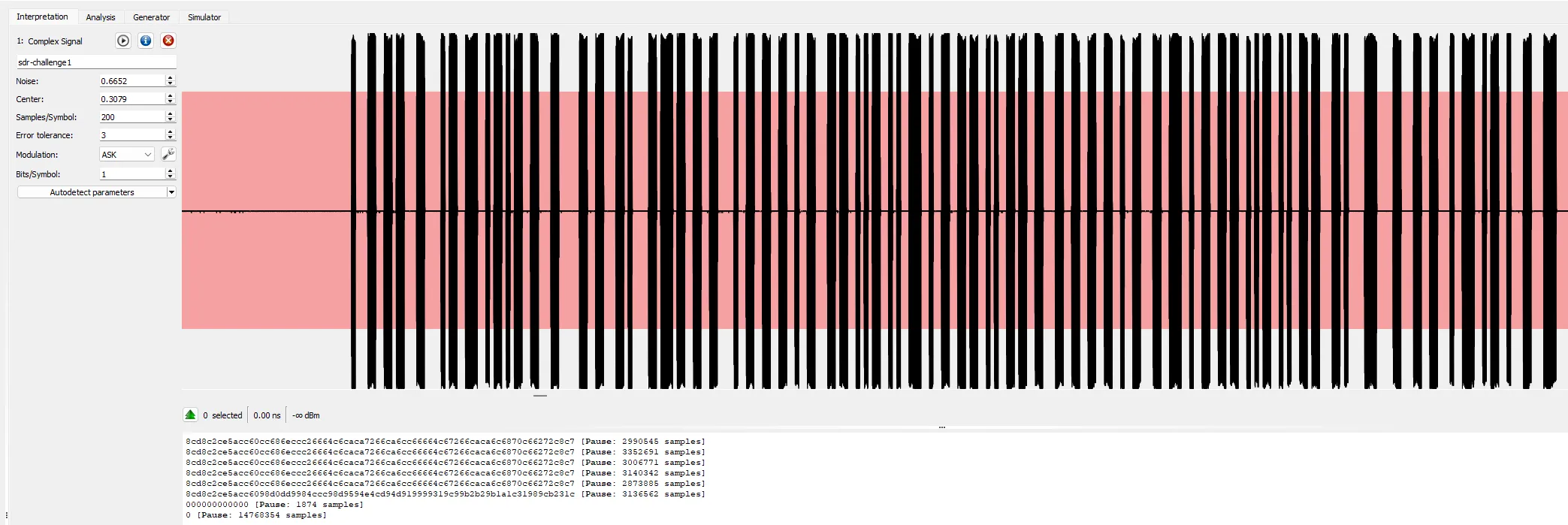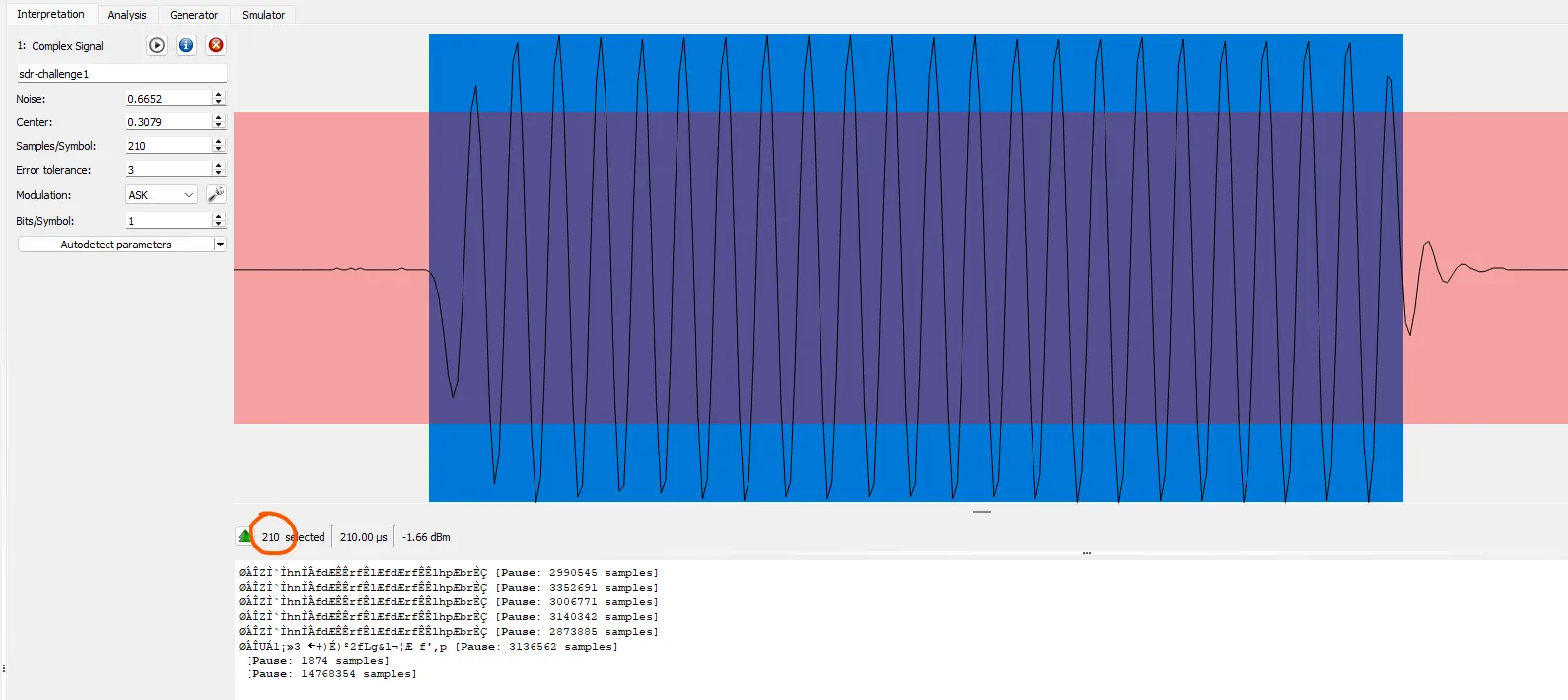Challenge description: We captured alien radio data... Can you crack their message?
The challenge is available at this address.
To understand this writeup, it’s important to grasp modulation concepts, so check out this lesson :)
We start with a file named
sdr-challenge1.cfile, open it with Universal Radio Hacker.
Okay, we have several segments. Zooming in on one of them allows us to deduce the modulation type.

Amplitude Shift Keying) modulation and more specifically an OOK (On Off Keying).In classic ASK, the amplitude of the carrier signal represents the data, with different amplitudes representing different bits.
Thus, for OOK, to represent a bit
1 we send a signal (on) and to represent a 0, we send nothing (off).
From URH, you can select the modulation type
ASK. You can also change the Show data as setting to ASCII so the data is displayed in clear text.
An important parameter to find is the Samples/Symbol, which for digital modulation represents the duration of one bit.
To find it, click Autodetect, sometimes it works (like here where it finds 200) but let’s learn to do it manually :)
Select approximately that segment to see the value shown below. Here,
210 is the size of the smallest word possible, hence the size of one symbol. For larger words, their size will be multiples of 210.Alright, change the
Samples/Symbol to this value.
Autodetect suggests.
No worries, the decoded output shows that every line (except perhaps the last) is similar. The same signal repeats.
I switched from Hex to ASCII view to see if a flag appeared, but that would be a minor detail regarding URH.By clicking the wrench icon next to the modulation type, you can disable the
Pause Threshold.
This parameter determines the pauses (intervals of silence) between the data segments in the signal. Essentially, it’s the minimum number of consecutive silent samples required to register a pause.
By default, URH sets this value at 8, meaning it considers a pause every 8 consecutive samples below a certain threshold.
Disabling this setting prevents URH from looking for pauses and allows it to successfully decode the signal.

